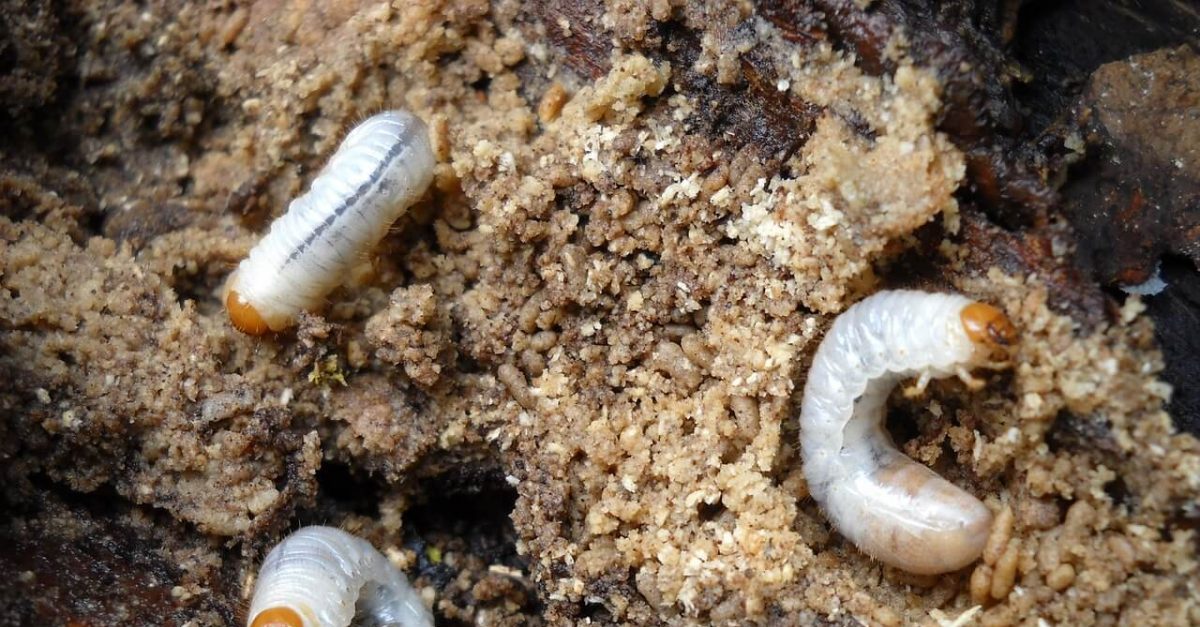Lawn Pest Invasion: How to Identify and Eliminate the Problem
You spend so much of your time and energy caring for your lawn, you want it to stay looking as good as possible. However, lawn pests can quickly destroy the beauty and health of your grass. From billbugs to grubs, these sneaky pests can quickly infiltrate your grass roots and cause large-spread damage. In this article, we’ll review a few common lawn pests you might encounter in southern Utah and how to control the issue.

Types of Lawn Pests in Southern Utah
If you get down close enough to your lawn you’ll notice plenty of creepy, crawlies inhabiting your grass. Many of these won’t cause harm to your yard, or might even be helpful! However, there are many types of pests that can cause damage or even kill your grass if left unchecked. A few of these include:
Billbugs
Billbugs are small beetles with long snouts, usually less than a half-inch long in total. While the adult billbugs can be seen starting in the spring, the real problem is when the larva start feeding in summer. Adult billbugs start laying eggs in late May to early June on blades of grass, then when the larvae hatch they eat through the grass stems and down to the roots. This causes the grass to yellow in large patches.
White Grubs
White grubs are similar to billbugs in that the larva is the most destructive and hatches in the summer months. They’re typically white, curled, and about an inch long as larvae. An identifying factor of white grubs compared to other larvae is they have three sets of legs. Grubs feed on the roots of the grass causing dead spots that can eventually turn white if left untreated.
Chinch Bugs
Chinch bugs are tiny beetles that start out with a red band then develop wings and turn black and white as they mature. They feed on most types of grass starting in the summer and continuing into fall. The damage they cause is often confused with “drought stress” or grass that hasn’t been watered enough. Chinch bugs cause medium to large dead patches in the lawn.

Pest Control Solutions
Lawn pest control is essential for a healthy, beautiful lawn. Depending on the severity of your infestation, you have many options when it comes to pest control. Proper care and watering can help prevent some pest issues, but it certainly won’t prevent all of them. There are many commercially available products, including sprays and granules, to help with your pest infestation. Be sure to read the label very carefully on the insecticide you purchase as some brands may have different requirements. Typically if you’re using a spray you’ll want to mow your lawn, delay watering for at least 24 hours after application, and don’t allow children or pets to use the lawn until it’s dry. If you’re using granules, you’ll have a similar process except that you’ll water your lawn immediately after application to allow it to dissolve.
It’s essential to remember the timing of your treatments is important as there are certain parts of the lifecycle that insecticide will be most effective. For preventative insecticides meant to kill grubs, the optimal application time is late June to early August. Then you’ll repeat the application every two or three months to keep pests away. If your infestation is severe or if grubs or other lawn pests have been an issue in the past, you’re likely going to be seeing them year after year. In this case, you’ll need to enlist the services of professionals. During your initial consultation, we’ll identify the pests in your lawn and come up with a game plan to take care of the problem. This will most often involve several treatments over a period of time to ensure the grubs are killed before they can mature, reproduce, and continue the cycle.
While there are many pests that can cause your lawn damage, proper lawn care coupled with preventative measures can help keep the issue under control. If your DIY methods aren’t working or your infestation is severe, enlisting our qualified professionals’ help will make your lawn look good as new before you know it!







